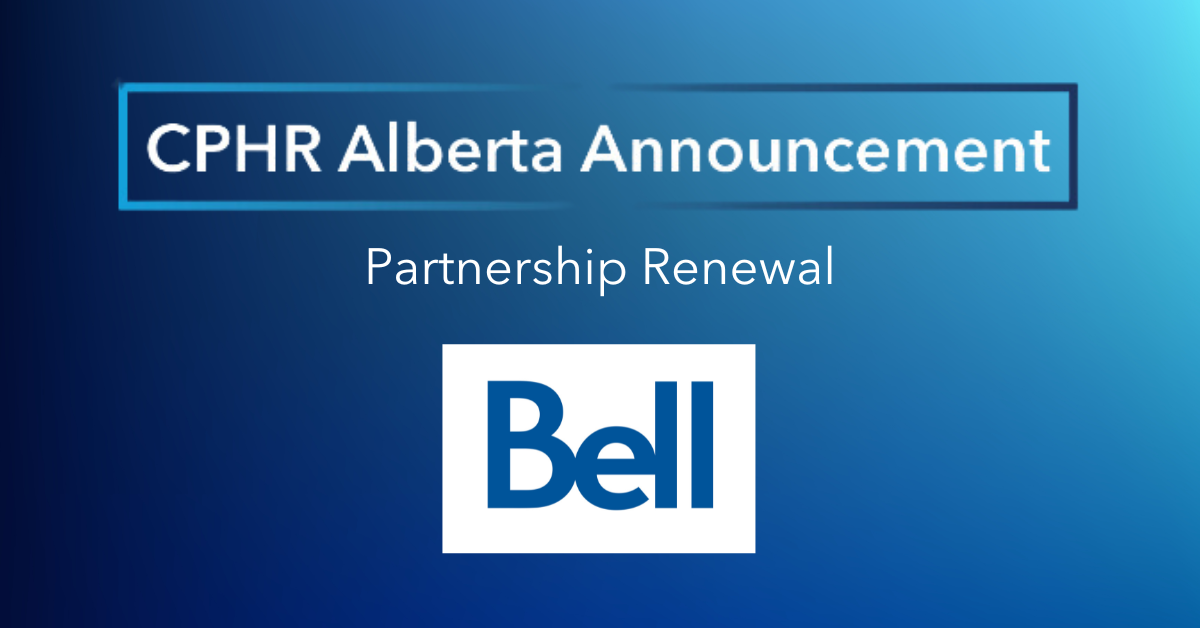
Bell Partnership Renewal Announcement 2024
Offers end February 13, 2024.*Beyond max speed, data speeds are up to 512 Kbps. **On select phones, over 24 months with Bell SmartPay™ on an eligible 2-year plan. Compared to our device full price. †One-time bill credit applied on the second bill, new activations only.
To redeem this exclusive offer, CPHR Alberta members can follow these five easy steps:
- Visit bell.ca/epp or call 1 833 964-4484
- Register as a new user, choose the ‘Personal Email’ option
- Enter CPHR Alberta in the company/association field and select your company from the drop-down
- Upload proof of CPHR Alberta membership (PDF or JPG formats) This can be a picture of your member portal including your member category and ID.
- Check out your exclusive offers from Bell!
Current as of November 20, 2023. 5G available in select areas. See bell.ca/5G. Available with compatible devices within network coverage areas available from Bell Mobility. Connection service fee ($60) will appear on your first bill. Existing Bell customers who choose to switch to the Bell Exclusive Partner Program before the end of their contract are required to pay out their device balance and are subject to a $50 migration fee. 9-1-1 government monthly fee in AB.: $0.95, N.B.: $0.97, N.L.: $0.75, N.S.: $0.43, P.E.I.: $0.70, Qué.: $0.46, N.W.T.: $1.70. SK.: $2.08. Bell remits required amount to government. Taxes extra. Other conditions apply. Subject to change without notice, not combinable with other offers. (1) Available for new activations when they bring their own phone only. One-time Connection Service Fee ($60) applies. Taxes extra. (2) Offer ends February 28, 2024. Bell SmartPayTM is available with new activations or upgrades on eligible 2-year rate plans. Credit is applied monthly over 24 months on your device payments. Activation must be in the same name as the primary account holder. Amortized taxes on the financed amount are payable with your monthly device payments. Purchase financing provided by Bell Mobility, on approved credit. Cost of borrowing is $0. If you end your Bell SmartPayTM Agreement early, then your remaining device payments will become due immediately. If you are ending your Service Agreement at such time as well, the remaining balance on your Agreement Credit (plus applicable taxes) will become due immediately. This amount will be reduced when required by the Wireless Code. Screen images are simulated. “Bell SmartPay” is a registered trademark of Bell Canada. All other trademarks and logos used are trademarks of their respective owners. © 2023 Bell Canada. All rights reserved.
The views and opinions expressed in this blog post belong solely to the original author(s) and do not necessarily represent the views and opinions of CPHR Alberta.





